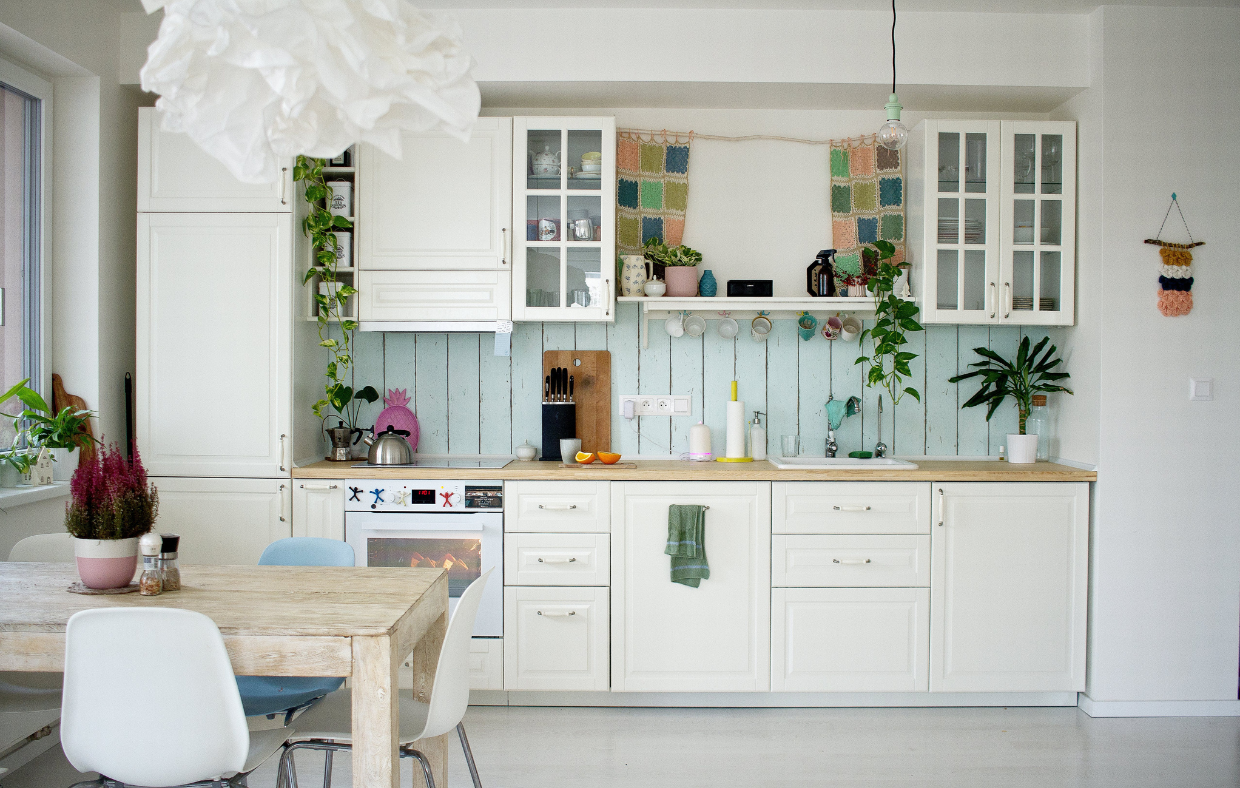
A well-organized kitchen is the cornerstone of efficient cooking and enjoyable meal preparation. Whether you’re a seasoned chef or a home cook, having a tidy, streamlined kitchen can save you time, reduce stress, and make your culinary adventures more enjoyable. In this guide, we’ll share practical tips and tricks to help you transform your kitchen into a functional, clutter-free haven where creativity and efficiency reign supreme.
1. Declutter and Simplify
The first step in organizing your kitchen is to declutter. Start by emptying your cabinets, drawers, and pantry. Sort through your items and categorize them into three groups: keep, donate, and discard. Be honest with yourself about what you really need and use. Items that are broken, expired, or rarely used should be discarded or donated.
2. Maximize Cabinet Space
Make the most of your cabinet space by using adjustable shelves, stackable organizers, and tension rods. Adjustable shelves allow you to customize the height of each section, making it easier to store items of varying sizes. Stackable organizers can help you make use of vertical space, while tension rods can be used to create dividers for cutting boards, baking sheets, and lids.
3. Organize Your Pantry
A well-organized pantry is essential for quick and easy meal preparation. Use clear, airtight containers to store dry goods such as pasta, rice, and cereal. Label each container to easily identify its contents. Group similar items together, such as baking supplies, snacks, and canned goods. Consider using lazy Susans or pull-out shelves to make it easier to access items at the back of the pantry.
4. Utilize Drawer Dividers
Drawer dividers are a game-changer when it comes to keeping utensils, gadgets, and tools organized. Use dividers to create designated spaces for different items, such as knives, spatulas, and measuring spoons. This not only makes it easier to find what you need but also prevents drawers from becoming cluttered and chaotic.
5. Create a Functional Work Triangle
The work triangle is a classic kitchen design principle that emphasizes the efficient layout of the three main work areas: the sink, stove, and refrigerator. Ensure that these three points are easily accessible and that there is ample counter space around each area for meal prep and cooking. This layout helps streamline your workflow and reduces unnecessary movement.
6. Use Wall Space
Don’t overlook the potential of your kitchen walls for additional storage. Install hooks, magnetic strips, or pegboards to hang pots, pans, and cooking utensils. Floating shelves can also provide extra space for frequently used items, such as spices, cookbooks, and small appliances. This not only frees up counter and cabinet space but also keeps essential items within easy reach.
7. Optimize Under-Sink Storage
The area under the sink is often underutilized and can quickly become cluttered. Use stackable bins, pull-out drawers, or tiered shelves to organize cleaning supplies, dishwashing tools, and trash bags. Consider installing a tension rod to hang spray bottles and keep them off the bottom of the cabinet.
8. Implement a Meal Planning System
A well-organized kitchen goes hand-in-hand with efficient meal planning. Create a dedicated space for meal planning supplies, such as recipe books, grocery lists, and a weekly menu planner. Use a whiteboard or chalkboard to jot down meal ideas, shopping lists, and important reminders. This helps streamline your grocery shopping and ensures you always have the ingredients you need on hand.
9. Keep Counters Clutter-Free
Clear and spacious countertops are essential for efficient meal prep. Store frequently used items, such as coffee makers and toasters, in easy-to-access but out-of-the-way locations. Use trays or baskets to corral smaller items and keep them organized. Only keep essential items on the counter to maintain a clean and uncluttered look.
10. Regular Maintenance
Once you’ve organized your kitchen, it’s important to maintain the system you’ve put in place. Set aside time each week to tidy up, wipe down surfaces, and put items back in their designated spots. Regularly review your pantry and refrigerator to discard expired items and restock essentials. Consistent maintenance ensures that your kitchen remains a functional and enjoyable space.
In conclusion, organizing your kitchen is a worthwhile investment that can enhance your cooking experience and bring order to your culinary space. By decluttering, maximizing storage, and implementing smart organization strategies, you can create a kitchen that is both stylish and functional. With these tips and tricks, you’ll be well on your way to transforming your kitchen into an efficient and enjoyable hub for all your cooking adventures.
